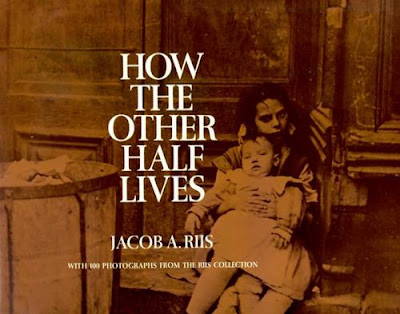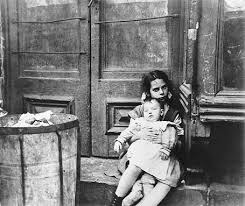A BIPOLAR'S JOURNEY
AND ITS ORIGIN
G'day folks,
I am pleased to introduce a good friend of mine who lives in India. Vijay is about to release his well-written book about Bipolar. Here is his guest feature article.
This love child was conceived fourteen months ago, various threads lead to it
over the last three years. Blogging was the first thread. One post on it
aroused a lot of interest and feedback:
it was my sharing of my own experience with
managing Bipolar Disorder. My Mentor, Puneet Bhatnagar spotted my ability to express myself with
conviction. He set up a website which was the genesis of this Book. Born on May
23, 2013, this community website,
the first such by an India bipolar, now has a global following and has
encouraged many Indians to share their problems openly.
What I noticed was that an overwhelming majority of the site's visitors were from outside India, not a bad thing in itself at all, for pain and compassion know no boundaries. However, was I effectively getting the message across to vast numbers in India who had had no internet access or were hampered by poor network reach?
I also realised that in my times of greatest turmoil, it was books, not websites which really helped change course of my life. The ability of a well told story in the form of a book to inspire and transform is quite incomparable.
The idea of penning my turnaround story thus firmed up.
Puneet then gave me the critical initial thrust. "Write down a couple of pages on exactly why are you writing this book. This will define your purpose." he said with his understated wisdom.
"Well begun is half done!" they say.
Aha! Let's not forget the middle and conclusion of the task. We creative types get bored easily and also constantly need to be motivated to stay on track. Mid way through the project, I developed cold feet.
'Am I really cut out to be an author? Have I over-reached and am just blogger material?'
Doubts, doubts and more doubts.
When the cause is for a common good, unbelievably radiant souls step in to inspire, guide and get you back on track. Jennifer Sertl, who is sympathetic to the cause of mental health awareness, is one such angelic being. She has supported me all through in this project, now in marketing it and beyond that in my Mental Health Awareness crusade in India- her inspiring mentoring is a blessing perhaps arranged by the universe. (Well, I actually owe you, Dr. Amit Nagpal, for this synergetic link).
"Let your hand write what your soul wants to say"
Jennifer, a woman of incredible intellect and profound insights, has been instrumental in my being a proud author today. For instance at the outset of our coaching series, I expressed to her my hesitation in centering the book on my journey. Wouldn't it be attention hogging? What if I broad-based it to make it community focused rather than in an autobiographical form?
"It is your intention that matters. Consider yourself as a lighthouse for bipolars in your part of the world. Stories inspire, allow your story to do just that."
If her coaching and mentoring wasn't enough, she has written Book's Foreword- the most beautiful and evocative foreword one could ever wish for! In fact living upto her magic in the body of the book is some challenge!
I doubt without your selfless, active involvement through and after the Book writing, I'd have accomplished anything of note, Soul Sis, Jennifer!
Dr.Amit Nagpal, has been a key instigator behind the scenes: my first published story was through his e-Book. Besides being my Career Coach, he has actively encouraged my social initiative. Being both appreciative and critical, he has raised my standard of creative writing. Most importantly, he has imbibed in me his rare skill of connecting with the hearts of the readers.
Jennifer, a woman of incredible intellect and profound insights, has been instrumental in my being a proud author today. For instance at the outset of our coaching series, I expressed to her my hesitation in centering the book on my journey. Wouldn't it be attention hogging? What if I broad-based it to make it community focused rather than in an autobiographical form?
"It is your intention that matters. Consider yourself as a lighthouse for bipolars in your part of the world. Stories inspire, allow your story to do just that."
If her coaching and mentoring wasn't enough, she has written Book's Foreword- the most beautiful and evocative foreword one could ever wish for! In fact living upto her magic in the body of the book is some challenge!
I doubt without your selfless, active involvement through and after the Book writing, I'd have accomplished anything of note, Soul Sis, Jennifer!
Dr.Amit Nagpal, has been a key instigator behind the scenes: my first published story was through his e-Book. Besides being my Career Coach, he has actively encouraged my social initiative. Being both appreciative and critical, he has raised my standard of creative writing. Most importantly, he has imbibed in me his rare skill of connecting with the hearts of the readers.
Puneet had uncannily predicted right at the very beginning that the website and book would set me free. Yes, it has indeed been a cathartic journey, from the inception to delivery of the love child! The Book is now available on online bookstores globally.
Be truthful, you might begin believing in yourself
Express your truth, maybe other might buy into it?
Write down your truth
Maybe you might fall in love with it
Keep writing, keep writing
And one fine day you are an author
If you have been truthful,
You might touch people's lives
And maybe, just maybe
Help them discover their truths.
Our journey continues, as we live up to our collective vision of
"Let's Walk Together, with purpose and zest..onward"
Vijay Nallawala is a Personal Branding Coach, Digital Storyteller and Blogger based in Mumbai.
"Writers are wired differently and in that respect, I am no different", he says.
Clancy's comment: I have often stated, 'If you are not born with a disability, you will probably pick up one along the way.' It's true. I would highly recommend this book to any of you who may suffer from bipolar, or know someone who does.
Love ya work, Vijay! A book like this takes a lot of courage to write. I am most impressed, and I'm not a man who is easily impressed.
I'm ...











































